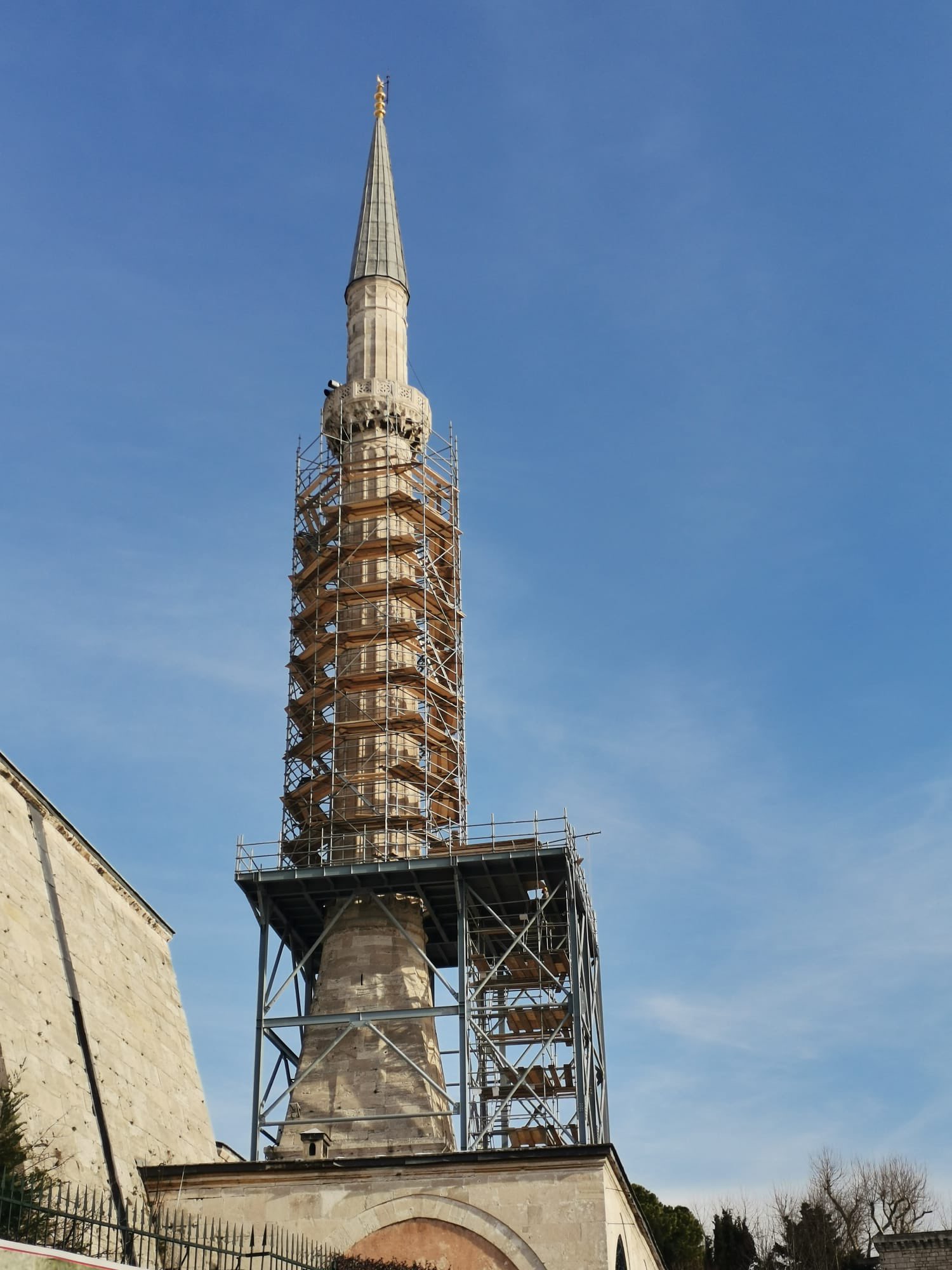Dismantling efforts have started on one of the four minarets encircling Hagia Sophia after the discovery of structural cracks, signaling the start of necessary restoration work.
Partial dismantling
Dr. Hasan Firat Diker, a member of the Scientific Committee for the Restoration of Hagia Sophia, explained that due to significant structural vulnerabilities identified in the Bayezid II minaret, initial repair efforts have focused on this particular structure. This strategic approach allows for a thorough assessment to determine whether the issues stem from seismic activity or corrosion of building materials. Once the extent of the damage is evaluated, restoration work will proceed accordingly, tailored to the unique characteristics of each minaret.
Installation of steel scaffolding
Temporary steel scaffolding has been erected around the minaret as a precautionary measure to safeguard visitors and workers during the restoration process. Dr. Diker clarified that this intervention aims to prevent any potential material dislodgement that could compromise visitor safety. He emphasized that while the installation of scaffolding marks an initial step in the restoration process, the overarching goal is to address structural weaknesses not only in the minarets but also in the main structure of the building, encompassing its exterior and domes.

Statement from the Directorate General of Foundations
The Directorate General of Foundations issued a statement via social media, confirming the detection of a significant crack in the Bayezid minaret of Hagia Sophia Mosque during routine inspections. Following the decision by the Scientific Council and the Maintenance Committee, measures were promptly taken to ensure visitor safety. A steel platform was erected, bolstered by comprehensive safety scaffolding, to facilitate ongoing restoration efforts.
Source: ethnos.gr / Translated by: Konstantinos Menyktas















